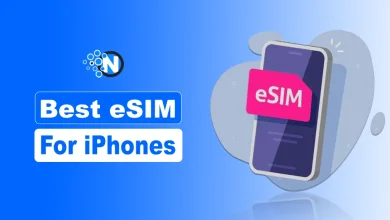What Is The Technology Behind Contactless Payments?
Nowadays, we casually bring our credit card or mobile phone near the POS terminal at a store, and the transaction is completed. But have you ever wondered how this system works?
The entire process is so convenient that you don’t even have to swipe your card or enter your PIN. To be honest, it is too easy, which is why people have started wondering how it works and whether or not the entire process is safe.
Contactless payments are the new trend, but it is not about a fancy card or an app, but a blend of technology that allows us to pay in seconds without the need to take out our card or swipe it.
In this blog post, I will explain how the contactless payment method works, whether it is safe, and how to use it properly.
Let’s start!
What are Contactless Payments?
Contactless payments are a fast and secure way to pay by simply tapping your card or device near a payment terminal, no swiping, inserting, or PIN required.
They use short-range wireless technologies, such as RFID (Radio Frequency Identification) or NFC (Near Field Communication), to transmit payment information between your card or device and the terminal.
Smartphones, smartwatches, and even fitness trackers can be used for contactless payments, thanks to apps like Apple Pay or Google Pay.

Technology Behind Contactless Payments
Near Field Communication
Contactless payments are completed using technology known as Near Field Communication (NFC). It may be unknown to you, but you’ve seen an NFC button on your smartphone.
This is a wireless technology that lets devices communicate when they are inches apart. This is how cards or contactless payments on the phone communicate with the POS terminal at a store. NFC uses radio waves to transmit data securely (like your payment details), and it all happens in a split second.
Nowadays, this technology is embedded into debit cards, smartwatches, and smartphones. To be honest, it is easier to understand how smartphones and smartwatches work, since they are tech devices, but how about physical cards? Is any debit card good for contactless payments?
The short answer is no. Not all debit cards have a contactless payment option, and to find out whether your card has this feature is to look for the contactless payment logo, which is kind of like a wireless signal symbol with three or four lines.
So, contactless cards have actual technology embedded in the card that allows them to communicate with POS terminals.
This means that contactless payments are possible thanks to Near Field Communication. But is the data transfer safe, and can anyone interrupt the data transfer and abuse your card information?
Well, this brings us to the next topic. Tokenization.
Tokenization
When you tap to pay, your actual card number isn’t sent, thanks to tokenization for that. This tech swaps your sensitive details with a unique, one-time code, or token, that’s useless to hackers. In 2025, tokenization is standard, protecting most of the contactless transactions.
The token, generated by your bank or wallet, is tied to a specific transaction and device, so even if intercepted, it’s a dead end. Think of it as giving the cashier a fake name that only your bank recognizes.
People praise tokenization’s role in reducing skimming risks, as no real data is exposed. This layer of disguise ensures your money stays safe, whether you’re buying groceries or a train ticket, making every tap a fortress of security.
EMV Standards
Contactless payments lean on EMV standards—named for Europay, Mastercard, and Visa—to keep transactions ironclad.
These standards, built into chip-enabled cards and devices, use dynamic data to create a unique code for each transaction, unlike old-school magnetic stripes. In 2025, EMV tech cuts fraud by 70% in contactless payments.
When you tap, the chip or NFC device talks to the terminal, verifying the payment with cryptographic keys. It’s like a secret handshake, only your card and the reader understand.
EMV’s global adoption, covering 95% of terminals, ensures your tap is both fast and fraud-proof, keeping your wallet safe wherever you roam.
Security Layers
Contactless payments don’t rely on one trick—they stack multiple protections to lock down your data. Here’s how they work together in 2025:
- Encryption: Data sent during a tap is scrambled with 128-bit encryption, unreadable without the key.
- Biometric Authentication: Over 30% of systems use fingerprint or facial scans for added verification.
- AI Monitoring: Banks use AI to spot odd transactions, flagging 85% of fraud attempts instantly.
These layers, combined with NFC’s short range and tokenization’s cloaking, create a digital vault. It’s like a bank heist movie where the vault has ten locks and a laser grid—good luck, hackers. This multi-pronged approach makes contactless payments safer than cash or swipes, with fraud rates below 1%.
Final Words
Contactless payments are designed to simplify the process and make it much more convenient for both businesses and customers. The entire system has been refined since the release of the first contactless payment card, and now it is safer than ever.
In most cases, contactless payments are limited to a certain amount (usually around $30), and after that, you need to enter a PIN number. Some banks even set limits on how many contactless payments you can make per day, just to keep your funds safe.
In the future, we expect contactless payments to take over the financial world. However, we will also see further advancements in technology.



